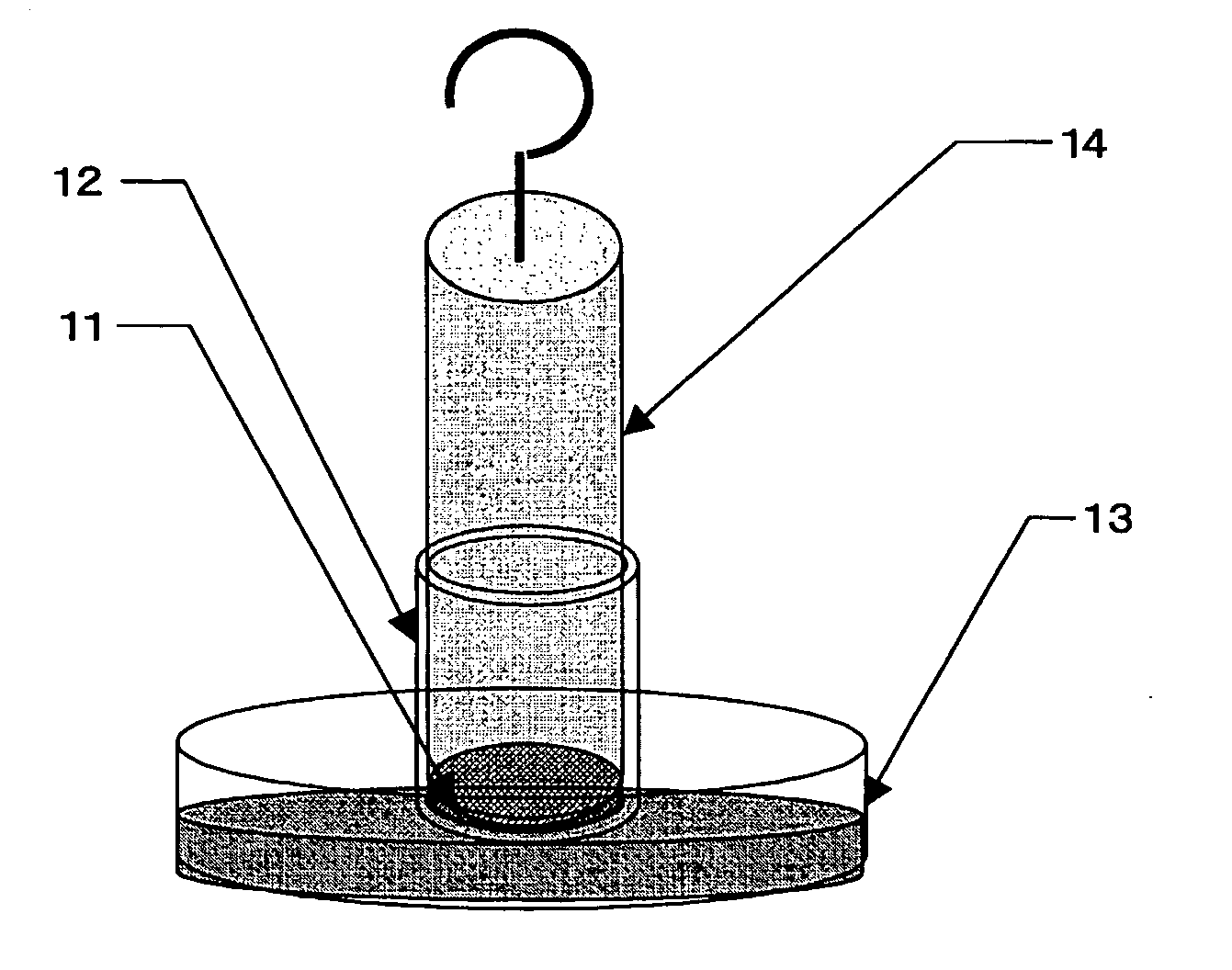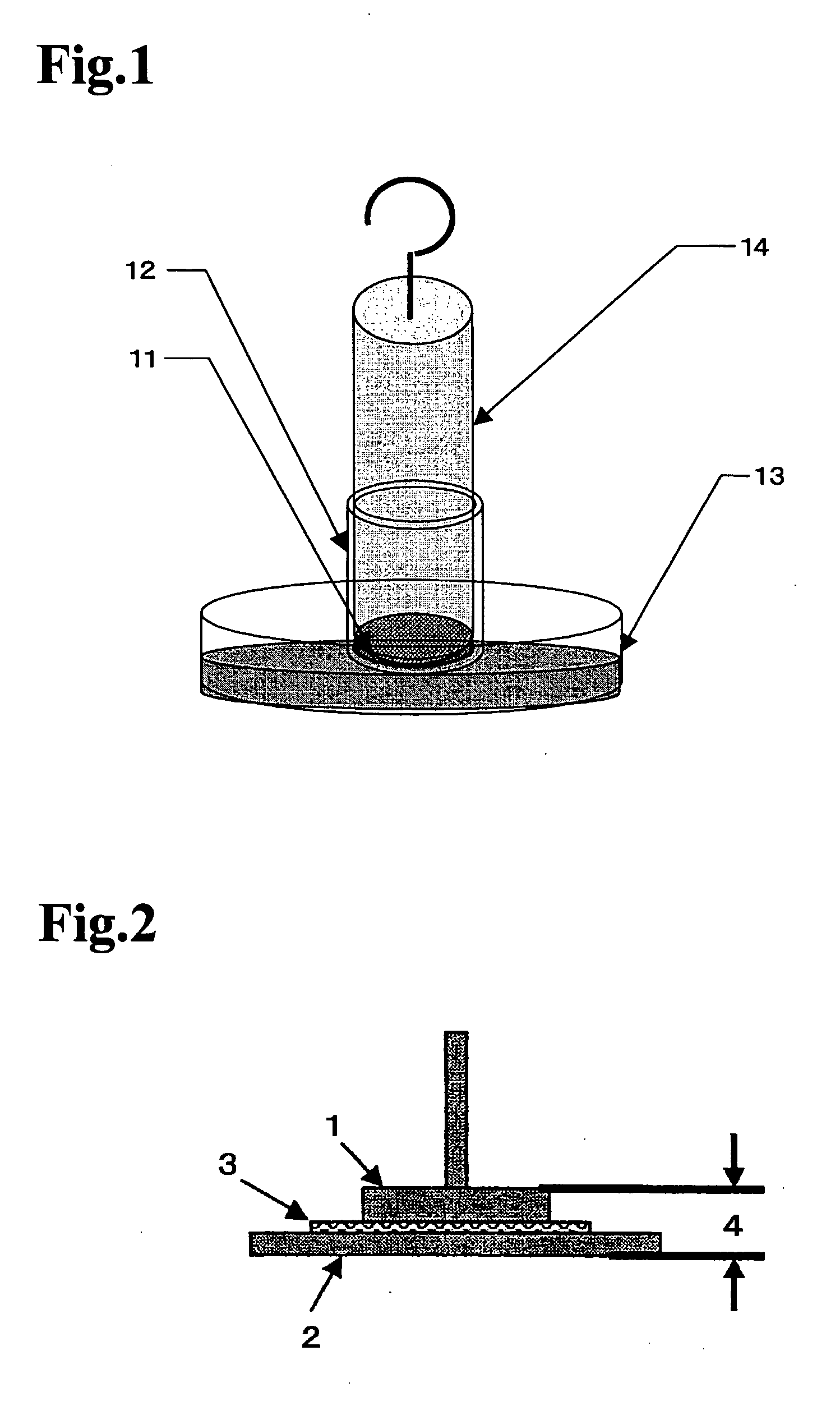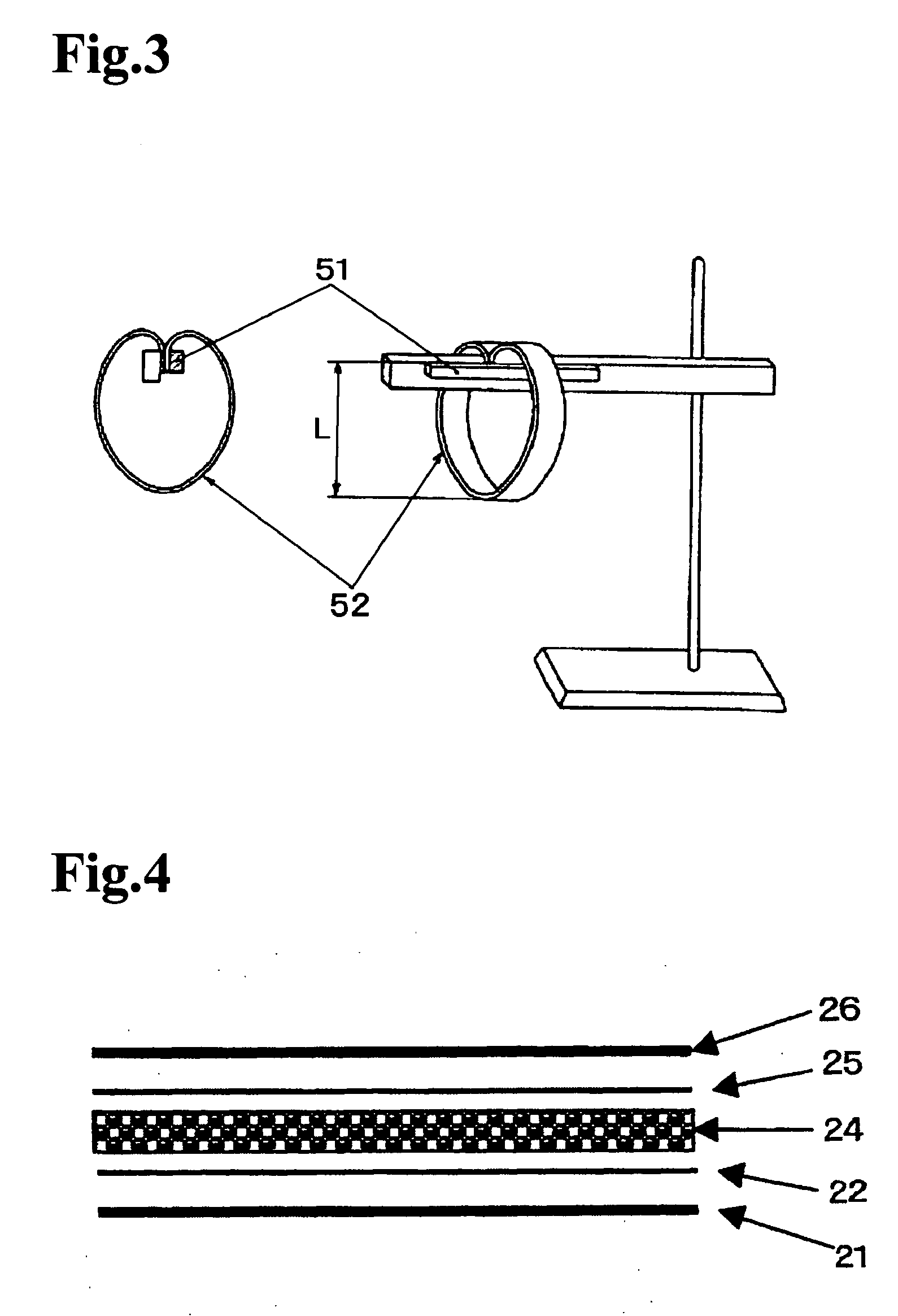Method for preparing water-absorbent polymer composite and accumulated material thereof
a water-absorbing polymer and composite technology, applied in the direction of absorbent pads, coatings, emulsion paints, etc., can solve the problems of composite water-absorbing capacity inevitably lowering, water-absorbing capacity of the composite being broken or pulverized, and the reduction of the bulk density of the composite and the water-absorbing capacity under pressure. , to achieve the effect of pliabl
- Summary
- Abstract
- Description
- Claims
- Application Information
AI Technical Summary
Benefits of technology
Problems solved by technology
Method used
Image
Examples
example 1
[0240] 100 parts by weight of acrylic acid was neutralized by adding 133.3 parts by weight of a 25 wt % aqueous solution of sodium hydroxide and 3.3 parts by weight of distilled water. This solution, an aqueous solution of partially neutralized acrylic acid, had a monomer concentration of 50 wt % and a degree of neutralization of 60 mol %. Then a solution A was prepared by adding 0.14 parts by weight of N,N′-methylenebisacrylamide as a crosslinking agent, and 4.55 parts by weight of a 31 wt % aqueous solution of hydrogen peroxide as an oxidizing agent, to 100 parts by weight of an aqueous solution of partially neutralized acrylic acid.
[0241] Separately, a solution B was prepared by adding 0.14 parts by weight of N,N′-methylenebisacrylamide as a crosslinking agent, and 0.57 parts by weight of L-ascorbic acid as a reducing agent, to 100 parts by weight of the same aqueous solution of partially neutralized acrylic acid as prepared in solution A.
[0242] The solution A and the solution ...
example 2
[0247] A product was produced in the same manner as in Example 1, except that polyethylene terephthalate (PET) fibers having a fiber diameter of 1.7 decitex, a length of 0.9 mm and a contact angle with water of 80° were used in place of the pulp fibers. It was confirmed that the product was water-absorbent polymer composites having a similar structure to those described in Example 1. See 103 and 104 in FIG. 10.
example 3
[0248] A product was produced in the same manner as in Example 1, except that nylon fibers having a fiber diameter of 1.7 decitex, a length of 0.9 mm and a contact angle with water of 50° were used in place of the pulp fibers. It was confirmed that the product was water-absorbent polymer composites having a similar structure to those described in Example 1. See 105 and 106 in FIG. 11.
PUM
| Property | Measurement | Unit |
|---|---|---|
| Fraction | aaaaa | aaaaa |
| Fraction | aaaaa | aaaaa |
| Pressure | aaaaa | aaaaa |
Abstract
Description
Claims
Application Information
 Login to view more
Login to view more - R&D Engineer
- R&D Manager
- IP Professional
- Industry Leading Data Capabilities
- Powerful AI technology
- Patent DNA Extraction
Browse by: Latest US Patents, China's latest patents, Technical Efficacy Thesaurus, Application Domain, Technology Topic.
© 2024 PatSnap. All rights reserved.Legal|Privacy policy|Modern Slavery Act Transparency Statement|Sitemap



